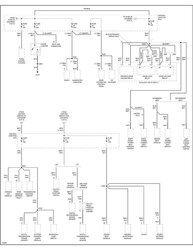oooookkkkk.... but I still don't understand how you are getting this result... something is "funny"..... back to basics, when you measure a voltage at a point, you take one test lead and connect it to the point in question and the other test lead goes to a KNOWN ground. IF you do that, and your getting 12v, that's sounds fine. My "concern" is how did you measure your "supposed ground".... where did you connect the test lead and where did you connect to a KNOWN ground? Irregardless, the check for a ground isn't usually a voltage check, its a resistance check. Again, place your test lead at the point in question (the "ground" of the lighter) and the other lead at a KNOWN ground... read 0 ohms (or there abouts depending on the quality of the meter and leads). IF it isn't 0, then you have a ground issue... not really a problem at this point because you have a "bigger problem". Finally, go to the fuse box, pull the fuse in question. Test RESISTANCE from the "outgoing" side of the fuse to a KNOWN ground... it should normally be high or something other than 0. Remove the lighter (disconnect the terminals on the lighter). Test your resistance at the fuse again. In your case, it is likely that you will see no change from the previous measurement. Basically, your problem lies in the lead between the fuse and the "hot" of the lighter OR the one pin on the data connector. No fun trying to trace these wires due to their "route" thru the dash.
Finally, just to be clear, when your lighter plug is just sitting there, your fuse is fine, but when you go to plug in something then the fuse goes cause you have "found" that 15 amps is running thru the circuit all the time and the "little extra" causes problems thereafter, right???? Well, IF that's the case, you have a further problem in your "investigation" cause something drawing 15 amps continuously will kill your battery in about 3-4 hours with no problem.... which you didn't seem to indicate... but is that the case also???











